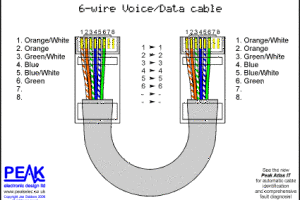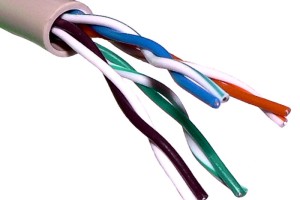Common Structured Cabling Mistakes
Dropped Packets from Improper or Loose Terminations
Ethernet is a “broadcast” network. This means that each device connected to the network sends its “packets” when the line is quiet. Packet sizes can range from 64 to 1518 bytes. In addition to the data being transmitted, each packet also contains source, destination, and parity (bit error detection) information. Errors occur when packets do not reach their destination or information is dropped from the data sequence. Common types of errors that may be associated with full network utilization and/or noise disturbances are:
Alignment: Packets do not end on an 8-bit boundary.
Collision: Two devices detect that the network is idle and try to send packets at exactly the same time.
Cyclic Redundancy Check (CRC): Packet size is correct, but the information contained in the frame check sequence is corrupt.
Fragment: Packet is undersized and contains corrupt FCS.
Jabber: Packet is oversized and contains corrupt FCS.
Oversize: Packets are greater than 1518 bytes in length.
Runt/Pygmy: Packets are less than 64 bytes in length.
Routed too Close to Electrical Cables
The cable must have a defined route that will protect it according to the environment in which it exists. No standard exists that details what kind of cable pathway is required in different circumstances and engineers are expected to use judgment to ensure adequate protection. Cable routes cannot be left to chance with installers allowed to pick any random route. There is also the commercial consideration that well-engineered cable management systems cost money and the end-users must decide how much cable management they want to pay for and the consequences of under-investment in this area.
Over Cinched Cable Ties
A tied bundle must be able to be moved through that tie with slight resistance. If the cable cannot move through the tie at all then it is too tight. Category 6 and optical cables cannot stand the same heavy-duty lashing as power cables. The tie must not be too thin either or it will start to cut into the sheath of the cable. Ideally the tie should be larger than 5mm wide.
Missing Labels
Making sure to label the cables pathways is imperative when trying to optimize your efficiency. Apart from nothing at all, this is the simplest form of cable containment. It can be appropriate when cable can be laid directly on a relatively smooth concrete floor which in turn is covered by a false floor. The assumption here is that the cable is protected from damage by virtue of the floor suspended above it.
Spaghetti Cabling
There is no exact or correct figure for the amount of cables allowed in any one bundle but experience shows that a figure of between 24 and 48 cables is the optimum. Spaghetti cabling is where cables are dragged wherever they lie. Cables must not be dragged around or across sharp edges. Power cables must cross data cables at right angles and should be separated from each other by a bridge.




